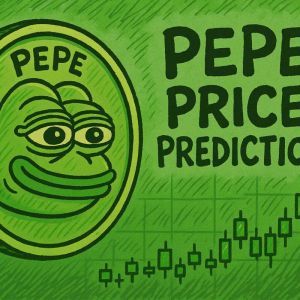2025-09-05 11:40:00
VanEck Crypto Monthly Recap For August 2025
Summary Bitcoin and Ethereum vol spiked to multi-month highs, breaking the summer lull as markets traded in tighter correlation with equities. ETH ETPs pulled in $4B while BTC saw $600M in outflows, helping push BTC dominance down from 65% to 57%. Okex (+248%) and Cronos (+112%) led August gains, far outpacing flat or negative returns in listed CEX equities like Coinbase and OSL Group. August saw a sharp return of crypto volatility, with Ethereum inflows surging, Bitcoin dominance slipping, and CEX tokens like OKB and CRO leading market gains. Price Returns August (%) YTD (%) Ethereum 15.81 29.93 MarketVector Smart Contract Leaders Index 7.39 2.07 S&P 500 Index 1.91 9.84 MarketVector Decentralized Finance Leaders Index 1.75 -31.84 Nasdaq Index 1.58 11.11 MarketVector Infrastructure Application Leaders Index 0.65 -37.42 Bitcoin -7.42 15.71 MarketVector Meme Coin Index -7.82 -47.35 Coinbase -19.38 22.65 Source: Bloomberg as of 8/29/2025. Index performance is not representative of fund performance. It is not possible to invest directly in an index. Past performance is no guarantee of future results. Not intended as a recommendation to buy or sell any securities named herein. The crypto market in August sailed through a moderate chop as BTC ( BTC-USD ) and ETH ( ETH-USD ) 30-day volatilities broke their summer malaise, reaching 40% and 90% , respectively. While BTC volatility reached its highest volatility readings since May 2025, ETH’s zoomed to elevated levels not attained since the aftermath of the Yen crash in September 2024. Prices rebounded unevenly, with ( 60% ) of the assets we track showing gains in August. Some notable winners were our MarketVector Smart Contract Leaders Index (MVSCLE) ( +13% ), ETH ( +18% ), and SOL ( SOL-USD ) ( +15% ). Unfortunately, BTC ( -7% ), SUI ( SUI-USD ) ( -10% ) and TON ( TONCOIN-USD ) ( -10% ) lagged during the dog days of summer. In August, cryptocurrencies traded closely in line with movements of the S&P 500, as the correlation between the MarketVector Smart Contract Leaders Index (MVSCLE) and the S&P 500 reached 0.73, the largest since April 2025. The supply of stablecoins across all blockchains reached $276 billion in August, which is a ( +36% ) gain in 2025. Total Value Locked (TVL), a strong barometer of DeFi’s success and the performance of alt-tokens, increased by 11% month-over-month (M/M). Ethereum's Volatility Approach 1-Year Highs in August In August 2025, Ethereum's Volatility Approached 1 Yr Highs Source: Artemis XYZ as of 8/28/2025. Past performance is no guarantee of future results. Not intended as a recommendation to buy or sell any securities named herein. BTC’s dominance of total cryptocurrency market capitalization dropped from its 5-year high ( 65% ) at the end of June and sagged to 57% in August. A big driver of this move was the violent resurgence of ETH, gaining ( +24% ) in August, as the continuing narrative around stablecoins and digital asset treasury accumulation (DATs) drove ETH ETPs flows. In August, Ethereum recorded more than $4 billion in ETP inflows, while BTC ETPs lost $600 million due to outflows. The unexpected surge in volatility in August, combined with the DAT activity, translated into daily DEX volumes increasing ( +18% ) month-over-month (M/M) to reach $16.7 billion . This figure is the second-highest level since January 2025 and the second-highest ever recorded. Likewise, DEX volume reached its second-highest ratio to centralized exchange volume (CEX) spot volume ( 17.1% ). Daily average blockchain revenues increased by 7% month-over-month (M/M), with Hyperliquid still leading the pack with an average of $3.7 million per day in August, up 24% M/M. Ethereum Updates ETH ETPs Post $4.0B Inflows in August, Beating BTC by Record Margin; Now 3% of Network Source: Artemis XYZ as of 8/26/2025. Past performance is no guarantee of future results. Not intended as a recommendation to buy or sell any securities named herein. Ethereum ETP inflows continued in August, building on the network’s record-breaking institutional adoption in July. While dollar-denominated inflows declined from $5.5 billion in July to $4.0 billion in August, Ethereum still sharply diverged from Bitcoin, whose ETP inflows fell from $6.1 billion in July to -$600 million in August. The disparity between BTC and ETH ETP flows contributed to a rare divergence in the performance of both underlying assets: for the first time since 2021, BTC hit a >( -10%) drawdown while ETH did not, a setup that occurred just 52 of 1,927 days ( ~2.7% ). Historically, BTC has returned a median of ( -2.8%) over the following 7 days and ( -15.6%) over 30 days. On the other hand, while ETH initially gains 6.4% over 7 days, it tends to follow a lower trend ( -8.4% ) over the next 30 days. Accordingly, we urge short-term caution: while ETH may offer a temporary cushion, both assets have historically rolled over after such divergences. In August, Strategic ETH Reserve companies grew their share of ETH’s supply by (+ 50% ). This represents the addition of ~1.4 million ETH to the DAT treasuries. The leaders in August’s ETH DAT accumulation were Bitmine Immersion Technologies ( +1.1M ETH), Sharplink Gaming ( +300k ETH), and ETHZilla corporation ( +102k ETH). Other noteworthy treasury companies that added ETH in August include FG Nexus ( +41k ETH), The Ether Machine ( +10.6k ETH) and Aave DAO ( +573 ETH). In total, ETH treasury strategies added ( +1.13%) of ETH supply during the month, compared to ( +0.24%) added to Bitcoin treasuries. While some believe that ETH DATs are simply catching up to BTC DATs, we remain open to the possibility that ETH is a better store of value than Bitcoin . And therefore, a better treasury asset. As a result of ETH’s exuberance, the ETH/BTC ratio rebounded to its highest level, 0.043 , since September 2024. The apex of the ETH/BTC move occurred on Sunday, August 24, when a BTC whale with over 24k BTC rapidly dumped 8k BTC in the course of 20 minutes, sending the BTC price from ~ $114k to $112k . Over the next twenty-four hours of trading, the whale sold the remaining 16k of BTC in his wallet. Interestingly, this whale not only dumped its BTC but also swapped its position for ETH. For a long time, the communities of Ethereum and Bitcoin have been at odds, with many Bitcoin zealots looking acrimoniously at Ethereum’s development. A large whale with over 24k BTC dumping his BTC for ETH is a stunning development that approximates Babe Ruth leaving the Red Sox for the Yankees. Ethereum’s Exit Queue Hits All-Time Highs in August Source: Dune Analytics - @hashkey_cloud as of 8/26/2025. Past performance is no guarantee of future results. Not intended as a recommendation to buy or sell any securities named herein. Another interesting event in August was new all-time highs in Ethereum’s validator exit queue, which reached 993K ETH. This figure corresponds to around ~31k validators or about ( 3% ) of the entire network. Ethereum’s exit queue exists to prevent a sudden mass validator exodus that may destabilize Ethereum’s network. At a certain scale, the departure of ETH validators from the network may also pose a security concern. However, we view the current buildup as being driven by three factors. First, we believe validators are still consolidating operations following this spring’s increase in the maximum validator ETH holdings, which rose from 32 ETH to 2,048 ETH. Second, we believe that many long-term holders are removing ETH from staking to participate in ETH DATs, which accept in-kind contributions. Third, we believe the long exit queue is partly explained by holders selling ETH as its price hovers near its all-time high of approximately $4,956 . Regarding the argument that validators are consolidating operations, the portion of the ETH supply staked has remained remarkably stable at 29.5% , despite the mass exits of validators. If we consider the contention that many ETH holders are joining DATs, we need look no further than the massive inflow of ETH into DATs, which totaled +1.4 million ETH in August. Additionally, these DATs intend to stake ETH to generate additional yield and should be added to new validators. On the third count, ETH has rallied ( +258%) from April lows to August highs, providing a good excuse for holders to reduce risk going into the typically tumultuous fall. In the past, large exit queues have occurred without much incident for Ethereum’s network or its price. For instance, in January 2024, the bankruptcy and restructuring of the crypto lending platform Celsius drove mass unstaking, but this behavior proved to be more operational than speculative. Soon after the event, ETH rallied in the ensuing month. Ethereum Ecosystem Share of DEX Volumes Approaches 50% Source: Artemis XYZ as of 8/28/2025. Past performance is no guarantee of future results. Not intended as a recommendation to buy or sell any securities named herein. Onchain, there was a triumphant return of DeFi activity to Ethereum as the project’s share of total DEX volumes approached 50% after hitting a low of 31% in July 2025. Additionally, Ethereum onboarded $13.2 billion in stablecoins in August, bringing its total to just under $150 billion hosted on its chain. Ethereum’s stablecoin ingestion represents around 90% of all stablecoins brought onchain in August. August’s increase in Ethereum activity drove daily average Ethereum transactions to an all-time high, with ~ 1.7 million, which compares to the next highest in May 2021, at ~ 1.5 million . Despite this surge in onchain transactions, the average transaction fee is down ( -45% ) in ETH terms from the previous month and ( -72% ) since August 2024. We attribute this dramatic decline in costs to Ethereum sagaciously raising the gas limit from 30M -> 36M -> 45M in two increases since January 2025. Effectively, this lowers prices for Ethereum users by increasing the amount of blockspace that can be packed with transactions. Going forward, Ethereum developers are currently working on a significant update to enhance Ethereum’s processing capabilities substantially. Ethereum Improvement Proposal 7928, proposed in March 2025 and currently in the testing and planning phase, will build the capability for parallel processing of transactions on Ethereum. This is a monumental development that, if implemented, will enable the Ethereum Virtual Machine ((EVM)) to increase its transaction capacity by at least 2.6 times . This is accomplished through something called “Access lists,” which would inform which parts of Ethereum’s ledger a transaction will change. As a result, transactions that touch different parts of Ethereum’s ledger, ones that do not conflict, can be processed simultaneously. High-speed competitors to Ethereum like Sui and Solana utilize this capability to increase their transaction throughput. Currently, Ethereum can only process one transaction at a time, even if the transactions alter separate parts of the Ethereum blockchain. If implemented, users sending payments on Ethereum and those trading on Uniswap will be able to have their transactions processed simultaneously. Solana Updates SOL/ETH Hovers Below 1 Yr Avg of 0.062 Source: Artemis XYZ As of 8/28/2025. Past performance is no guarantee of future results. Not intended as a recommendation to buy or sell any securities named herein. The price of SOL has significantly lagged behind that of ETH after reaching an all-time high ratio (SOL/ETH) of ~0.087 in April 2025. Currently, SOL/ETH sits around 0.047 , which compares to a year earlier when it was 0.056 . We attribute the majority of this decline in the ratio to renewed institutional interest in blockchain tokenization and stablecoins, as well as the perception that most deployments will occur within the Ethereum ecosystem. The continued lethargy of memecoin trading in spring/summer 2025 has also disproportionately affected Solana and contributed to its relative share of onchain trading dropping ( -6% ) in August 2025 vs August 2024. Likewise, the emergence of ETH DATs, combined with ETH ETPs gobbling up almost 10% of the total ETH supply, has accelerated ETH’s momentum. SOL, by contrast, has fewer, less capitalized DATs and awaits SEC approval of a Solana spot ETP. At the time of writing, 1.4% of SOL supply worth $1.7B is held by DATs as opposed to ETH DATs, which have $31B ETH, corresponding to 5.6% of the ETH supply. Of course, we would also be remiss if we did not mention that competition for onchain trading has intensified with Hyperliquid offering a suite of enticing trading products. Hyperliquid’s success, most notably in perpetual futures (perps) trading, has drawn away a vast number of speculators from Solana. Hyperliquid has been successful in churning users from Solana by offering a better platform for perpetual futures trading. The inferior user experience of perpetual exchanges on Solana is directly attributable to the chain’s technical issues despite strong projects on Solana like Drift offering serviceable products. Perpetual futures require fast, reliable execution to manage leveraged positions, avoid liquidations, and capitalize on short-term price movements. Even minor shortcomings in a perps DEX can greatly impact the bottom-line economics of traders. Solana’s defects, compared to Hyperliquid, include: Network jitter causing transaction delays and performance fluctuations Users are uncertain if their transactions will land Market makers are unsure if their orders will be cancelled quickly enough High activity congesting the network during periods of peak volatility Market makers cannot quote spreads as tight as they can on Hyperliquid/CEXes Oracle messages may not be able to update onchain prices quickly Transaction compute limitations constraining logic for running perps exchanges Perpetuals exchanges rely upon complex functions to operate effectively Additionally, Solana has other complex idiosyncrasies that make exchanges run less smoothly than they do on centralized competitors and Hyperliquid. In August, Solana addressed some of its technical shortcomings by beginning the process of upgrading to a new software version called Alpenglow. Alpenglow comes after Solana increased its compute limit per block from 60M to 100M in July, enabling more logic to be processed with each block. Alpenglow will be implemented piecemeal, after the validators approve two separate Solana Improvement Documents (SIMD): 0326 and a yet-to-be-numbered SIMD. One component of Alpenglow, called “Votor,” will allow validator voting to occur offchain through a single round of voting. The result is that Solana transaction feedback will sharply decrease from 12.8s to 150ms . Likewise, this change will increase the resiliency of Solana by enabling the network to function still even when ( 20% ) of the validators are offline and ( 20% ) of the validators are malicious, corresponding to ( 40% ) of the network being down. Previously, Solana could not progress if > than 33.3% of the network was not cooperating. Another interesting component of Alpenglow is that validators will no longer pay for their votes with transaction fees. Instead, they will pay 1.6 SOL upfront at the start of each epoch for the right to validate the network. The entirety of this fee will be burned compared to ( 50% ) of the voting fees being burned in the past. Therefore, in addition to making Solana faster, Alpenglow will enhance the token economics (tokenomics) of SOL. The second portion of Alpenglow is a more optimized cadence for fanning out messages from the leader validator to the other validators. This is important because it paves the way for cutting-edge advancements on Solana, such as multiple concurrent leaders, while also further solidifying low latency and network stability. Additionally, August saw the Jito team release its BAM upgrade, which promises to improve trading economics by substantially cutting down onchain maximal extracted value (MEV). Reducing MEV is much coveted by traders because MEV can cause transaction fees to be as high as ( 10% ) of the value of a transaction. This is due to trader bots manipulating token prices as speculators buy, especially during volatile periods, resulting in eye-watering execution slippage. CEX Tokens (OKB, CRO) Rallied in August While CEX Equities Stayed Flat/Down Source: Bloomberg as of 8/29/2025. Index performance is not representative of fund performance. It is not possible to invest directly in an index. Past performance is no guarantee of future results. Not intended as a recommendation to buy or sell any securities named herein. MarketVector ™ Smart Contract Leaders Index (MVCEX) Components Token Weight % Binance Coin ( BNB-USD ) 22.7 OKB 22.3 Cronos 21.9 WhiteBIT Coin ( WBT-USD ) 14.3 Bitget Token 12.4 KuCoin Token ( KCS-USD ) 4.0 NEXO ( NEXO-USD ) 1.9 WOO 0.3 Bitmart Token ( BMX-USD ) 0.2 Tokocrypto 0.1 Source: MarketVector as of 8/29/2025. Index performance is not representative of fund performance. It is not possible to invest directly in an index. Past performance is no guarantee of future results. Not intended as a recommendation to buy or sell any securities named herein. Exchange tokens OKB ( OKB-USD ) (+248%) and Cronos ( CRO-USD ) (+112%) were top performers in August, following a series of announcements on scaling and deepening their integrations with public blockchain ecosystems. As the native cryptocurrency of the OKX ecosystem, holding the OKB token effectively rewards users with “premium” features on the exchange. Historically, OKB’s utility has included trading fee discounts, boosted yield on OKX’s Earn products, partnership integrations (e.g., discounts, payments), and privileged access to the platform’s Initial Exchange Offering (“IEO”) service, OKX Jumpstart. In mid-August, OKX announced overhauling both its L2 network, “X Layer”, and OKB’s economic design. Following the upgrade, OKB became the exclusive native gas token of X Layer, meaning that all network transaction processing fees must be paid in OKB, just as the Ethereum network requires ETH for gas. A concurrent, one-time burn of ~65.3M OKB tokens was announced alongside the upgrade, reducing OKB’s circulating supply to a now fixed 21.0M , mirroring Bitcoin’s max supply. The burned supply was sourced from OKB’s treasury reserves and historical repurchases. OKB’s X Layer upgrade hinges on adopting Polygon’s Pessimistic Proof ((PP)) zero-knowledge proofs upgrade, which brings performance improvements such as increased throughput ( ~5,000 transactions per second), reduced transaction fees, and enhanced security and interoperability with Ethereum’s ecosystem. By integrating with OKX Wallet, Exchange, and Pay, the strategic move aims to capture a share of the growing DeFi, payments, and RWA market. As an offshore exchange, OKX’s initiatives also benefit from the CFTC’s August 28th announcement , which creates a path for non-U.S. entities to provide U.S. persons direct market access to their trading platforms. Crypto.com’s CRO also benefited from a DAT partnership with some important partners. A press release on August 26th announced that Trump Media & Technology Group and Crypto.com agreed to a SPAC deal to accumulate CRO, making CRO the latest digital asset to join the DAT frenzy. Trump Media Group CRO Strategy will go public via a merger with Yorkville Acquisition Corp and listed on the Nasdaq under the ticker MCGA. However, the deal is not the first between TMTG and Crypto.com. In March of this year, TMTG announced partnering with Crypto.com to launch ETFs and other digital assets and securities products with a “Made in America focus” through its Truth.Fi brand. Launched in late 2021, Cronos is also an EVM-compatible chain targeting DeFi, payments, and RWAs. As OKB is for OKX’s X Layer, CRO is the native gas token of Crypto.com’s Cronos Chain, used for paying transactions, chain governance, and staking. On Crypto.com’s CEX, CRO also offers holders lower trading fees, higher earning rates, and reduced margin borrowing rates. Benefits and Pitfalls of CEX Tokens In general, CEX tokens offer a unique hybrid product that marries conventional L2 token utilities with the kinds of premium features that only centralized exchanges can offer. While they can potentially expose users to the exchange’s growth through as a quasi-equity-like instrument, they offer asymmetric risks as well. Exchange tokens often have hidden supply dynamics, and insiders with important, non-public information often control them. The 2022 collapses of CEXs Celsius (CEL) ( -99% ), FTX (FTX) ( -99% ), and Voyager (VGX) ( -100% ) not only left their depositors empty-handed with a fraction of their crypto but also gave investors CEX tokens that lost effectively all their value. The attractive yields offered by these exchanges, boosted by holding CEX tokens, drew millions of unsophisticated investors. Despite offering sleek “earn” and “savings” products resembling traditional banks, these institutions were not (and still are not!) banks, and do not carry banking safeguards like the Federal Deposit Insurance Corporation (FDIC), which offers a standard maximum deposit insurance of $250k per depositor, per insured bank, for each account ownership category. In response to the 2022 CEX collapses, regulators worldwide are advancing frameworks to protect users and stabilize the crypto ecosystem. The European Union’s Markets in Crypto-Assets (MiCA) regulation, fully effective as of late 2024, mandates that centralized exchanges segregate client assets, maintain full reserves, and undergo regular audits to prevent the commingling and mismanagement seen in FTX and Celsius. MiCA also imposes strict transparency and anti-money laundering requirements, aiming to curb the risks of high-yield products that lured Voyager’s users. In the U.S., proposed legislation like the CLARITY Act, building on FIT21, mandates protections such as CEX registration and segregation of customer funds to prevent their use for proprietary trading. As of August 2025, the bill has passed the House and is advancing in the Senate, signaling progress toward robust oversight. Globally, the International Organization of Securities Commissions (IOSCO) is pushing for unified standards on CEX resilience. While these measures indicate progress, gaps in enforcement and jurisdictional disparities persist. Thus, while we are not opposed to CEX tokens in principle, we urge caution due to their historical volatility and the catastrophic losses from past exchange failures, pending more robust and globally consistent regulatory safeguards. Links to third party websites are provided as a convenience and the inclusion of such links does not imply any endorsement, approval, investigation, verification or monitoring by us of any content or information contained within or accessible from the linked sites. By clicking on the link to a non-VanEck webpage, you acknowledge that you are entering a third-party website subject to its own terms and conditions. VanEck disclaims responsibility for content, legality of access or suitability of the third-party websites. Disclosures Index Definitions S&P 500 Index: is widely regarded as the best single gauge of large-cap U.S. equities. The index includes 500 leading companies and covers approximately 80% of available market capitalization. Nasdaq 100 Index: is comprised of 100 of the largest and most innovative non-financial companies listed on the Nasdaq Stock Market based on market capitalization. MarketVector Centralized Exchanges Index: designed to track the performance of assets classified as 'Centralized Exchanges'. MarketVector Decentralized Finance Leaders Index: designed to track the performance of the largest and most liquid decentralized financial assets, and is an investable subset of MarketVector Decentralized Finance Index. MarketVector Media & Entertainment Leaders Index: designed to track the performance of the largest and most liquid media & entertainment assets, and is an investable subset of MarketVector Media & Entertainment Index. MarketVector Smart Contract Leaders Index: designed to track the performance of the largest and most liquid smart contract assets, and is an investable subset of MarketVector Smart Contract Index. MarketVector Infrastructure Application Leaders Index: designed to track the performance of the largest and most liquid infrastructure application assets, and is an investable subset of MarketVector Infrastructure Application Index. MarketVector Digital Assets 100 Large-Cap Index: market cap-weighted index which tracks the performance of the 20 largest digital assets in The MarketVector Digital Assets 100 Index. MarketVector Digital Assets 100 Small-Cap Index: market cap-weighted index which tracks the performance of the 50 smallest digital assets in The MarketVector Digital Assets 100 Index. MarketVector Meme Coin Index: modified market cap-weighted index which tracks the performance of the 6 largest meme coins. Meme coin refers to crypto assets often named after characters, individuals, animals, artworks, or other memetic elements. Initially supported by enthusiastic online traders and communities, these coins are intended for entertainment purposes. Coin Definitions Bitcoin ((BTC)): A decentralized digital currency enabling peer-to-peer transactions without intermediaries or a central authority. Ethereum ((ETH)): A decentralized smart contract platform enabling developers to build and deploy decentralized applications (dApps) and financial infrastructure. Sui ((SUI)): A Layer 1 blockchain built by Mysten Labs focused on high-performance smart contracts and fast finality, utilizing the Move programming language. Solana (SOL): A high-performance Layer 1 blockchain known for its low fees, fast transaction processing, and a rapidly growing ecosystem of DeFi and consumer applications. OKB (OKB): The native token of the OKX ecosystem, used for paying transaction fees on its X Layer network, participating in governance, and accessing exchange benefits such as trading fee discounts, yield boosts, and token sales. Toncoin (TON): A layer-1 blockchain originally developed by Telegram, optimized for scalability, speed, and integration with the messaging app. Hyperliquid (HYPE): A hybrid blockchain optimizing decentralized futures trading with Layer-1 scalability and Layer-3 Ethereum compatibility. Risk Considerations This is not an offer to buy or sell, or a recommendation to buy or sell any of the securities, financial instruments or digital assets mentioned herein. The information presented does not involve the rendering of personalized investment, financial, legal, tax advice, or any call to action. Certain statements contained herein may constitute projections, forecasts and other forward-looking statements, which do not reflect actual results, are for illustrative purposes only, are valid as of the date of this communication, and are subject to change without notice. Actual future performance of any assets or industries mentioned are unknown. Information provided by third party sources are believed to be reliable and have not been independently verified for accuracy or completeness and cannot be guaranteed. VanEck does not guarantee the accuracy of third party data. The information herein represents the opinion of the author(s), but not necessarily those of VanEck or its other employees. Index performance is not representative of fund performance. It is not possible to invest directly in an index. Investments in digital assets and Web3 companies are highly speculative and involve a high degree of risk. These risks include, but are not limited to: the technology is new and many of its uses may be untested; intense competition; slow adoption rates and the potential for product obsolescence; volatility and limited liquidity, including but not limited to, inability to liquidate a position; loss or destruction of key(s) to access accounts or the blockchain; reliance on digital wallets; reliance on unregulated markets and exchanges; reliance on the internet; cybersecurity risks; and the lack of regulation and the potential for new laws and regulation that may be difficult to predict. Moreover, the extent to which Web3 companies or digital assets utilize blockchain technology may vary, and it is possible that even widespread adoption of blockchain technology may not result in a material increase in the value of such companies or digital assets. Digital asset prices are highly volatile, and the value of digital assets, and Web3 companies, can rise or fall dramatically and quickly. If their value goes down, there’s no guarantee that it will rise again. As a result, there is a significant risk of loss of your entire principal investment. Digital assets are not generally backed or supported by any government or central bank and are not covered by FDIC or SIPC insurance. Accounts at digital asset custodians and exchanges are not protected by SPIC and are not FDIC insured. Furthermore, markets and exchanges for digital assets are not regulated with the same controls or customer protections available in traditional equity, option, futures, or foreign exchange investing. Digital assets include, but are not limited to, cryptocurrencies, tokens, NFTs, assets stored or created using blockchain technology, and other Web3 products. Web3 companies include but are not limited to, companies that involve the development, innovation, and/or utilization of blockchain, digital assets, or crypto technologies. All investing is subject to risk, including the possible loss of the money you invest. As with any investment strategy, there is no guarantee that investment objectives will be met and investors may lose money. Diversification does not ensure a profit or protect against a loss in a declining market. Past performance is no guarantee of future performance. © Van Eck Associates Corporation. Original Post











